
Enoch Arnold Bennett was an English author, best known as a novelist who wrote prolifically. Between the 1890s and the 1930s he completed 34 novels, seven volumes of short stories, 13 plays, and a daily journal totalling more than a million words. He wrote articles and stories for more than 100 newspapers and periodicals, worked in and briefly ran the Ministry of Information in the First World War, and wrote for the cinema in the 1920s. Sales of his books were substantial and he was the most financially successful British author of his day.

"Bluebeard" is a French folktale, the most famous surviving version of which was written by Charles Perrault and first published by Barbin in Paris in 1697 in Histoires ou contes du temps passé. The tale tells the story of a wealthy man in the habit of murdering his wives and the attempts of the present one to avoid the fate of her predecessors. "The White Dove", "The Robber Bridegroom" and "Fitcher's Bird" are tales similar to "Bluebeard". The notoriety of the tale is such that Merriam-Webster gives the word "Bluebeard" the definition of "a man who marries and kills one wife after another". The verb "bluebearding" has even appeared as a way to describe the crime of either killing a series of women, or seducing and abandoning a series of women.

Constance Campbell Bennett was an American stage, film, radio, and television actress and producer. She was a major Hollywood star during the 1920s and 1930s; during the early 1930s, she was the highest-paid actress in Hollywood. Bennett frequently played society women, focusing on melodramas in the early 1930s and then taking more comedic roles in the late 1930s and 1940s. She is best remembered for her leading roles in What Price Hollywood? (1932), Bed of Roses (1933), Topper (1937), Topper Takes a Trip (1938), and had a prominent supporting role in Greta Garbo's last film, Two-Faced Woman (1941).
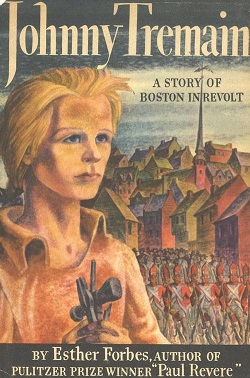
Johnny Tremain is a work of historical fiction written in 1943 by Esther Forbes that is set in Boston prior to and during the outbreak of the American Revolution. Intended for teen-aged readers, the novel's themes include apprenticeship, courtship, sacrifice, human rights, and the growing tension between Patriots and Loyalists as conflict nears. Events depicted in the novel include the Boston Tea Party, the British blockade of the Port of Boston, the midnight ride of Paul Revere, and the Battles of Lexington and Concord.
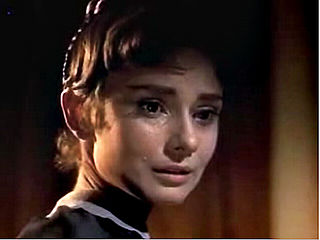
Countess Natalya "Natasha" Ilyinichna Rostova is a central fictional character in Leo Tolstoy's 1869 novel War and Peace. She is the daughter of Ilya Rostov, a loving, kind, and generous nobleman. Natasha is based on both Tanya Behrs, Tolstoy's sister-in-law, and Sophia Tolstaya, Tolstoy's wife.

Poor Things is a novel by Scottish writer Alasdair Gray, published in 1992. It won the Whitbread Award and the Guardian Fiction Prize the same year.

The Clayhanger Family is a series of novels by Arnold Bennett, published between 1910 and 1918. Though the series is commonly referred to as a "trilogy", and the first three novels were published in a single volume, as The Clayhanger Family, in 1925, there are actually four books. All four are set in the "Five Towns", Bennett's thinly disguised version of the six towns of the Staffordshire Potteries.
Nigel William Bradshaw is a British-born actor, who is best known for his role as in the Australian television series Prisoner as Officer Dennis Cruickshank
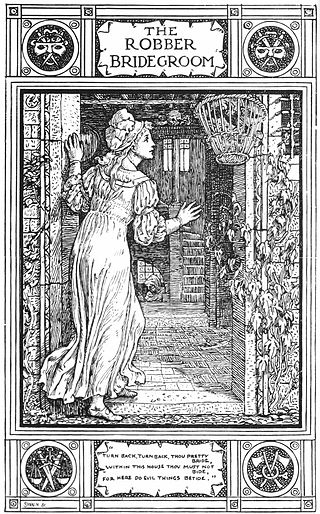
"The Robber Bridegroom" is a German fairy tale collected by the Brothers Grimm, tale number 40. Joseph Jacobs included a variant, Mr Fox, in English Fairy Tales, but the original provenance is much older; Shakespeare alludes to the Mr. Fox variant in Much Ado About Nothing, Act 1, Scene 1:
The Armless Maiden is a Russian fairy tale collected by Alexander Afanasyev in Narodnye russkie skazki.

Ann Sophia Stephens was an American novelist and magazine editor. She was the author of dime novels and is credited as the progenitor of that genre.

The Gem of Life is a TVB grand production drama, that broadcast between October 2008 and February 2009. The series was specifically filmed to celebrate TVB's 41st Anniversary. Filming took place in many locations apart from Hong Kong, including Tibet, Taiwan, and France.
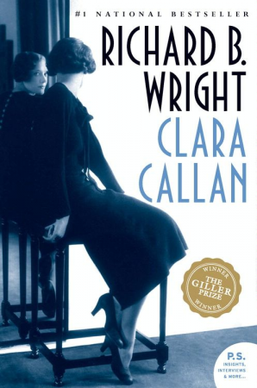
Clara Callan is a novel by Canadian writer Richard B. Wright, published in 2001. It is the story of a woman in her thirties living in Ontario during the 1930s and is written in epistolary form, utilizing letters and journal entries to tell the story. The protagonist, Clara, faces the struggles of being a single woman in a rural community in the early 20th century. The novel won the Governor General's Award in English fiction category, the Scotiabank Giller Prize, and the Trillium Book Award.

The Odd Women is an 1893 novel by the English novelist George Gissing. Its themes are the role of women in society, marriage, morals and the early feminist movement.
The Old Wives' Tale is a 1921 British drama film directed by Denison Clift and starring Fay Compton, Florence Turner and Henry Victor. It is based on the 1908 novel The Old Wives' Tale by Arnold Bennett.
Sophia and Constance is a British drama television series that originally aired on the BBC in six episodes from 13 April to 18 May 1988. It was an adaptation of the 1908 novel The Old Wives' Tale by Arnold Bennett, which follows the lives of two sisters through the Victorian era.

Constance Dorothy Evelyn Peel was an English journalist and writer, known for her non-fiction books on cheap household management and cookery. She wrote with the name Mrs. C. S. Peel, taking the name of her husband, Charles Steers Peel. She is sometimes cited as Dorothy Constance Peel. After the First World War, she worked on behalf of women, sitting on governmental committees.
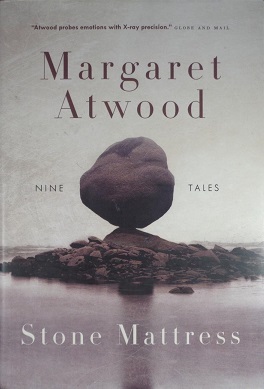
Stone Mattress is a 2014 short fiction collection by the Canadian author Margaret Atwood. Atwood describes the pieces in the collection as "tales" rather than short stories, as they draw from the mythical and fantastical aspects associated with fables and fairy tales, rather than from conventional literary realism.

The Testaments is a 2019 novel by Margaret Atwood. It is the sequel to The Handmaid's Tale (1985). The novel is set 15 years after the events of The Handmaid's Tale. It is narrated by Aunt Lydia, a character from the previous novel; Agnes, a young woman living in Gilead; and Daisy, a young woman living in Canada.

Cinderella is Dead is a 2020 young adult book by Kalynn Bayron. The novel is focused on Sophia Grimmins, a queer teenager living in the same world as Cinderella, 200 years after her death. Young women that are coming of age are forced to attend balls to be chosen as wives of men they've never met.
















